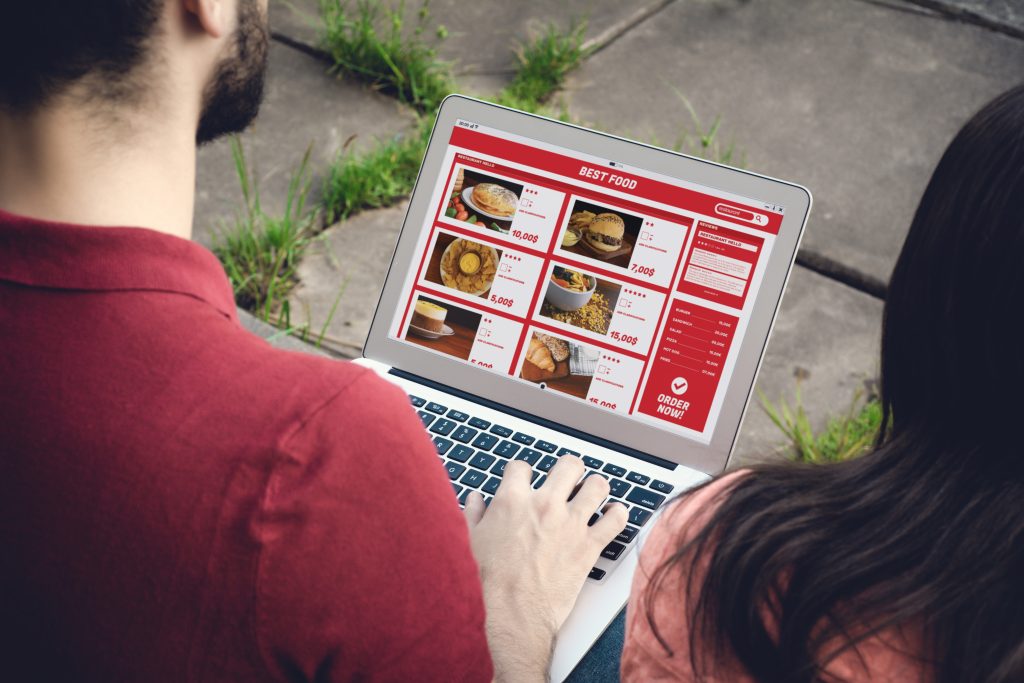Launching a restaurant is hard work. From finding the right location to designing the perfect menu, the to-do list never ends. But in today’s digital-first world, if your restaurant doesn’t show up online — it might as well not exist.
A well-built website does more than look good. It’s your 24/7 salesperson, your digital menu, your trust builder, and your booking agent. And yet, many restaurant owners either skip this step or rush into it without a strategy.
At Restaurant Suite 360, we’ve helped dozens of Florida-based restaurants — from quick-service to fine dining — create websites that not only look great, but drive real revenue. If you’re planning to build your restaurant’s first website (or fix an outdated one), this guide will walk you through what matters most.
Choose the Right Name and Build a Cohesive Digital Identity
Before you even start building your website, you need a name that works across all digital channels — domain, social handles, and search engines. This step may seem simple, but getting it wrong can cause confusion, missed traffic, or even legal headaches.
What Makes a Great Restaurant Name?
Your name is your first impression. It should be:
- Easy to remember and spell
- Unique within your region
- Related to your concept, story, or cuisine
- Short enough for a domain and social media handle
Avoid vague or overly generic names like “Flavor House” or “Latin Kitchen Express.” Instead, tie it to your roots, your menu, or your community.
Example:
Instead of “Latin Grill,” try “Barrio Bites” — short, punchy, and brandable.
Check Availability Before You Commit
Before printing a logo or hiring a web designer, confirm:
- Domain availability: Is the .com free? Tools like Namecheap or GoDaddy can help.
- Social media handles: Check Instagram, Facebook, TikTok, and even Yelp.
- Google Business Profile: Ensure no local business has a similar name.
Example:
If your restaurant is called Sabor Tropical, make sure you can claim:
- sabortropical.com
- @sabortropical on Instagram and TikTok
- “Sabor Tropical” as your business name on Google Maps
Why Consistency Matters for SEO and Trust
Having mismatched names across platforms causes confusion for both customers and search engines.
Poor digital identity:
- Website: sabortropicalmiami.com
- Instagram: @sabor.latinfood
- Google Maps: “Tropical Sabor Restaurant”
Consistent digital identity:
- Website: sabortropical.com
- Instagram: @sabortropical
- Google Maps: “Sabor Tropical”
When your brand is consistent across all channels, Google trusts it more — and so do your customers.
Set Clear Goals for Your Website
Every restaurant website should have one primary job: convert visitors into customers. But how that happens depends on your business model.
What do you need your website to do?
- Accept reservations
- Enable online ordering
- Show your menu clearly (no PDFs)
- Highlight reviews and photos
- Let users call or get directions instantly
A solid website should be simple, mobile-friendly, and designed with the customer’s decision-making process in mind. If it’s hard to navigate or loads too slowly, potential diners will move on — especially on mobile.
Tip: 70%+ of restaurant website traffic comes from mobile. If your site doesn’t work well on phones, you’re losing guests.
What Your Website Needs — Pages, Content, Design & Experience
A restaurant website isn’t just a digital flyer — it’s your most important marketing asset. It needs to do more than show your hours and location. It should guide visitors from curiosity to conversion: booking a table, placing an order, or visiting your restaurant.
At Restaurant Suite 360, we build websites with a clear focus: performance, clarity, and conversion. Here’s how to think through the core elements every restaurant website should have.
Essential Pages Every Restaurant Website Needs
Before you think about animations or fancy fonts, make sure you’re covering the basics. These aren’t optional — they’re the foundation.
1. Homepage
Your homepage should make a strong first impression and answer these three questions within seconds:
- What type of restaurant is this?
- Where is it located?
- What can I do next?
Keep it clean, fast-loading, and focused on your main goal: visit, book, or order.
2. Menu Page (Not a PDF)
Avoid uploading a PDF. Google can’t read it well, and most users won’t zoom in on a phone.
Instead:
- Use searchable text (HTML)
- Break it into clear sections (e.g. Starters, Mains, Desserts)
- Include prices and descriptions
- Add allergen and dietary info if possible
A well-structured menu helps with SEO (“best arepas in Tampa”) and gives guests confidence before they visit.
3. About Page
Tell your story. Customers love knowing who’s behind the food.
- Who are the founders?
- What’s the inspiration behind the restaurant?
- What makes your approach or background unique?
This builds trust and emotional connection — two ingredients that convert visitors into loyal guests.
4. Contact & Location Page
Make it as easy as possible for people to visit you. Include:
- Google Maps embed
- Click-to-call phone number
- Operating hours (with holiday notices)
- Parking or transit directions
- Social media links
If you accept reservations, embed your system (e.g., OpenTable or Resy) directly on this page.
5. Gallery / Photos Page
Strong visuals = higher conversions. Use real, high-quality photos of:
- Your best-selling dishes
- Your space (interior and exterior)
- Happy guests (with permission)
- Team in action (adds personality)
Avoid overused stock images — they reduce authenticity.
Content That Builds Trust and Drives Search Traffic
Great design isn’t enough. Your content also needs to be optimized for SEO (search engine optimization). That means:
- Use keywords like “Latin restaurant in Miami” naturally
- Include your city or neighborhood in page titles and meta descriptions
- Add alt-text to images (e.g., “tostones with garlic aioli in Wynwood”)
- Answer questions people search for (e.g., “Do you have vegan options?”)
Pro Tip: Google favors local businesses that update their site often. Consider adding a blog or “news” section for specials, events, or seasonal dishes.
Mobile Experience Comes First
Most restaurant website visits happen on a smartphone. If your mobile version is clunky, unresponsive, or slow — you’re losing money.
What mobile users expect:
- Tap-to-call phone number
- Tap-to-navigate map
- Fast load time (under 3 seconds)
- Menus that don’t require zooming
A well-optimized mobile site doesn’t just help users — it also improves your Google rankings.
Conversion-Ready Design
Design isn’t just about looking good — it’s about guiding action.
Make sure your CTAs (calls-to-action) are:
- Visible without scrolling
- Clear and specific (e.g., “Order Now,” “Book a Table,” “View Menu”)
- Repeated throughout your site, not just once
Use colors, spacing, and layout to draw attention to what matters — don’t hide your revenue drivers.
Building Your Restaurant Website with WordPress, SEO & Performance in Mind
Once you’ve mapped out your content and structure, it’s time to build — but how you build your website matters just as much as what’s on it. If you want your restaurant website to rank well on Google, load fast, and be easy to update, you need the right platform, tools, and setup from the start.
At Restaurant Suite 360, we specialize in WordPress websites designed for restaurant growth. Below we break down the essentials so you understand the “why” behind each decision — and what to prioritize.
Why WordPress Is the Best Platform for Restaurants
There are many DIY website builders (Wix, Squarespace, GoDaddy Site Builder), but WordPress stands out for long-term performance and flexibility.
Benefits of WordPress for restaurant owners:
- SEO-optimized structure from the start
- Total design flexibility using Elementor or other page builders
- Full control over your content and hosting
- Massive plugin ecosystem for bookings, delivery, reviews, and more
- Scalable for future needs (adding online ordering, blog, loyalty programs)
You own your site — no monthly lock-in or limits based on tiers.
Use Elementor for Fast, Drag-and-Drop Design
Elementor is a drag-and-drop builder for WordPress. It gives you full visual control of your website — no code needed.
Why we recommend it for restaurants:
- Pre-built restaurant blocks and layouts
- Easy to edit menus, hours, and banners
- Great for mobile responsiveness
- Works well with SEO plugins and performance tools
With Elementor, you can launch faster and keep your site updated without hiring a developer every time you change your hours.
Hosting & Performance: Don’t Go Cheap
If your hosting is slow, your site will be slow — and customers won’t wait.
Look for:
- Managed WordPress hosting (e.g., SiteGround, WP Engine, Kinsta)
- Free SSL (for security and trust)
- Daily backups and uptime monitoring
- Fast support response times
A fast-loading website not only improves user experience — it boosts your SEO rankings and helps convert more traffic into orders or reservations.
SEO Tools to Boost Local Visibility
To appear when someone searches “best tacos near me” or “Latin restaurant in [city],” your site needs SEO.
Install one of these plugins:
- Rank Math (our top pick): Easy setup, schema support, local SEO built-in
- Yoast SEO: Another good option, widely used and beginner-friendly
Focus on these SEO fundamentals:
- Include keywords in your page titles, meta descriptions, and image alt texts
- Use your city/neighborhood in headers and body copy
- Build internal links between pages (e.g., About → Menu → Order)
- Add structured data (schema) for menu, hours, location, and reviews
Local SEO isn’t just for search engines — it builds trust with customers.
Integrations You’ll Likely Need
Plan your integrations from the beginning. Don’t bolt them on later.
Key integrations for restaurants:
- Reservation system: Resy, OpenTable, or Tock
- Online ordering: ChowNow, ToastTab, or BentoBox
- Delivery: Uber Eats or DoorDash integrations
- Email marketing: Mailchimp, ConvertKit, or your POS’s built-in tools
- Analytics & tracking: Google Analytics 4 + Facebook Pixel
Each of these adds functionality — but also user data that helps you grow smarter.
Final Thoughts
You don’t need a complicated or expensive website to grow your restaurant. But you do need one that is fast, SEO-optimized, mobile-friendly, and built to convert visitors into paying guests.
Want a site that checks all those boxes and more?
Book a free strategy call with Restaurant Suite 360 — we’ll show you how we’ve helped dozens of restaurants build digital experiences that drive real results.








